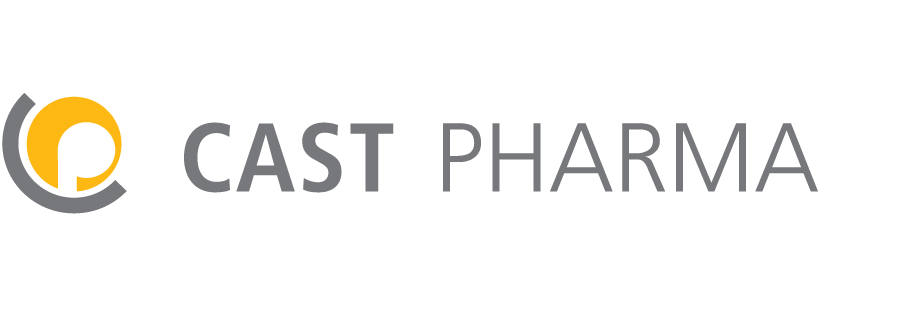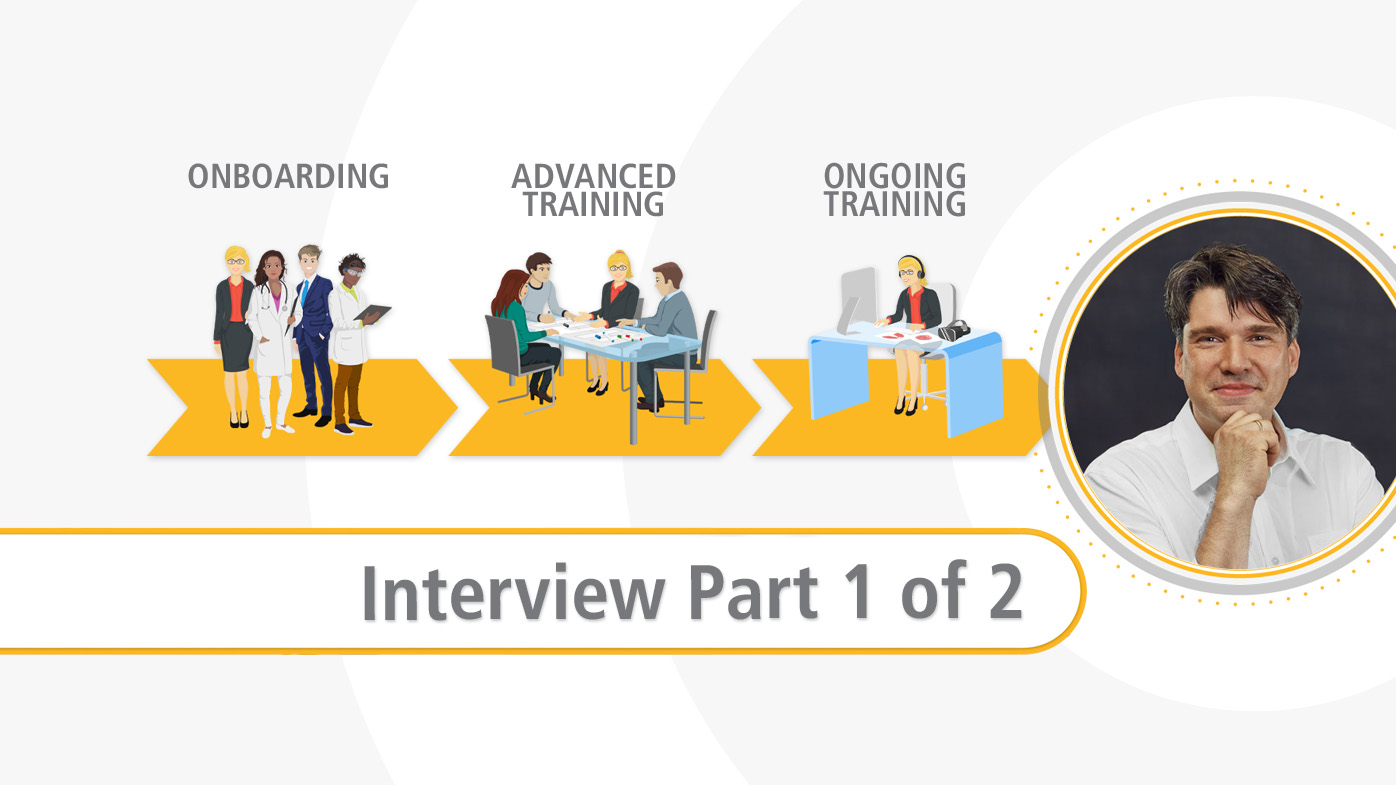How to create an effective learning and development program for medical affairs–part 1
An interview with Thomas Frei, executive creative director at CAST PHARMA
Learning and development (L&D) is something that accompanies you throughout your entire life. Learning for your career does not end with graduation or an academic degree. You’ve definitely experienced getting acquainted with a new job. In large pharmaceutical companies, new employees in medical affairs usually run through an onboarding process to learn what they need to know to meet the demands of their profession. But how do you develop a learning program that fulfills the unique needs of medical affairs? And is onboarding everything that is necessary to optimally perform in the field of medical affairs? Thomas Frei, executive creative director of CAST PHARMA, will answer these questions for us and offer insights into the L&D philosophy of CAST PHARMA.

Thomas Frei is the executive creative director and one of the two founders of CAST PHARMA. For more than 20 years, he has developed medical educational material from mechanism of action animation films to eLearning tools and has worked extensively on the principles of learning and the science of teaching.
Question 1:
You and your team produce educational tools for medical affairs. What in your opinion are the specific demands of learning and development for medical affairs?
That’s a good question. In my opinion, there are three big challenges in medical affairs L&D you have to consider.
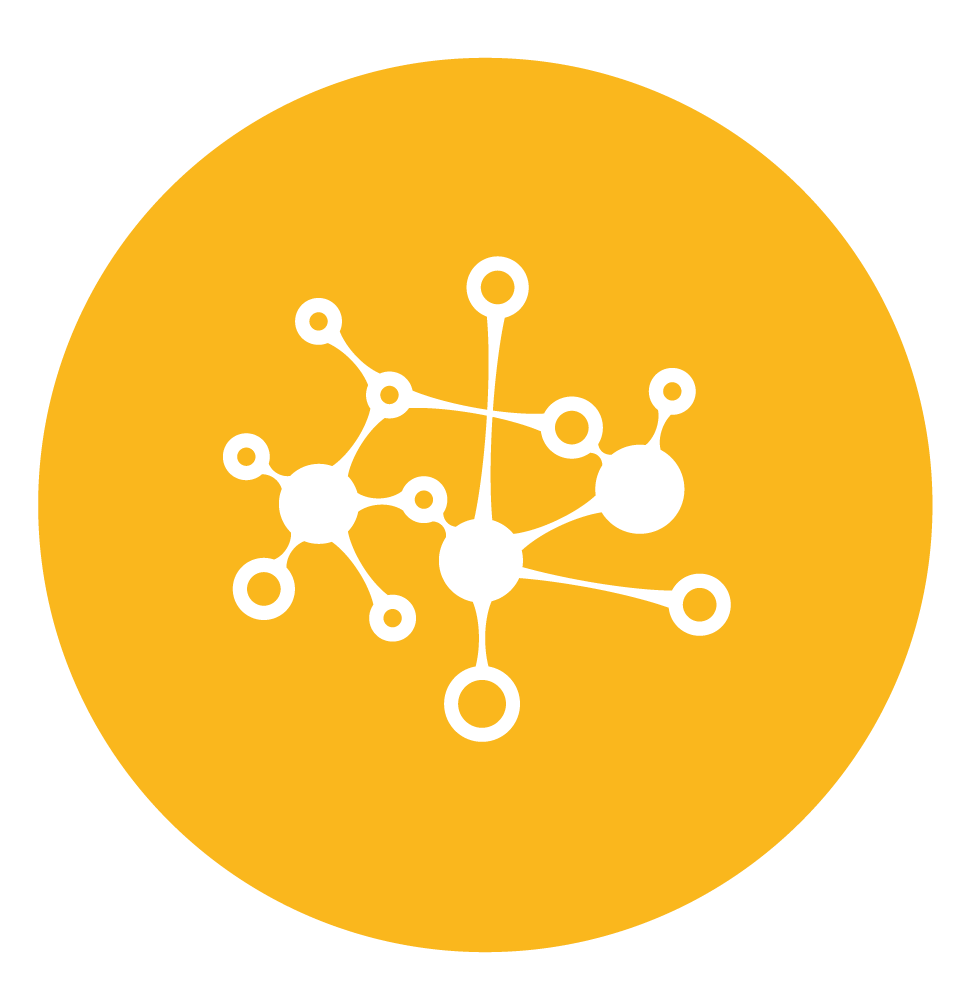
1. highly complex, specialized content
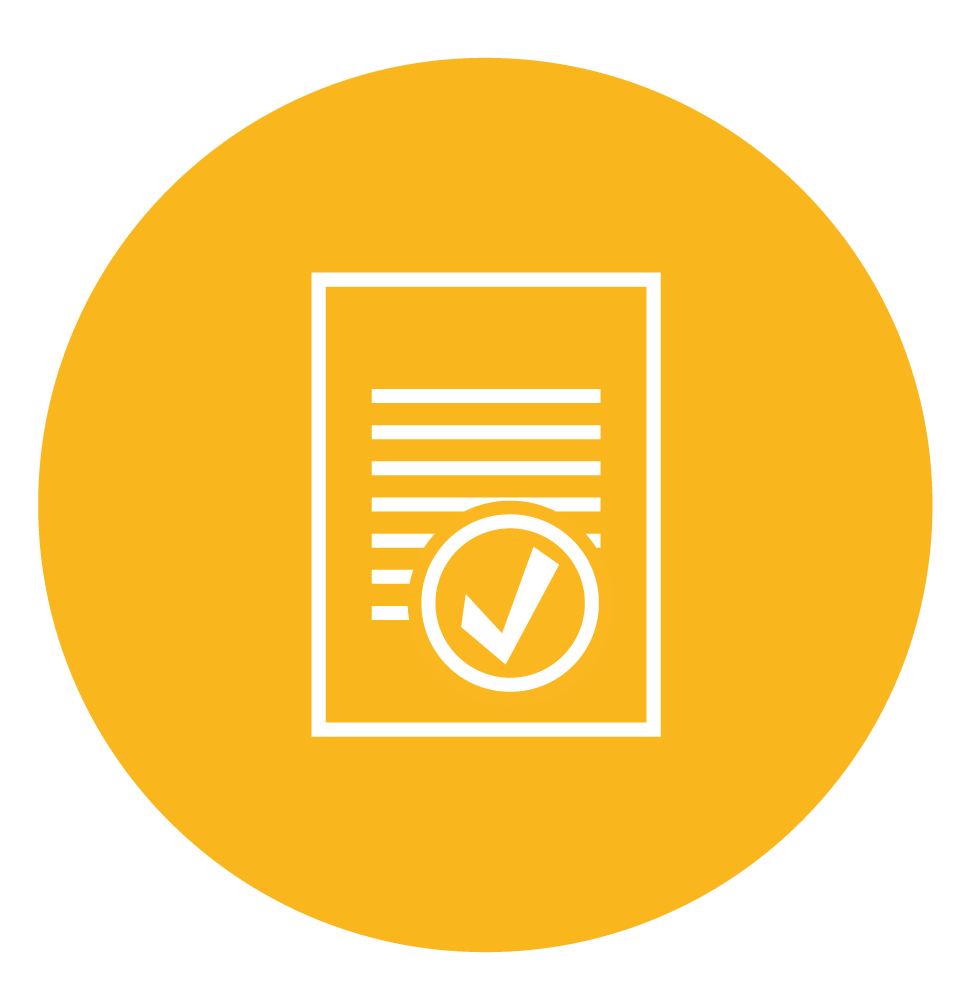
2. regulated environment
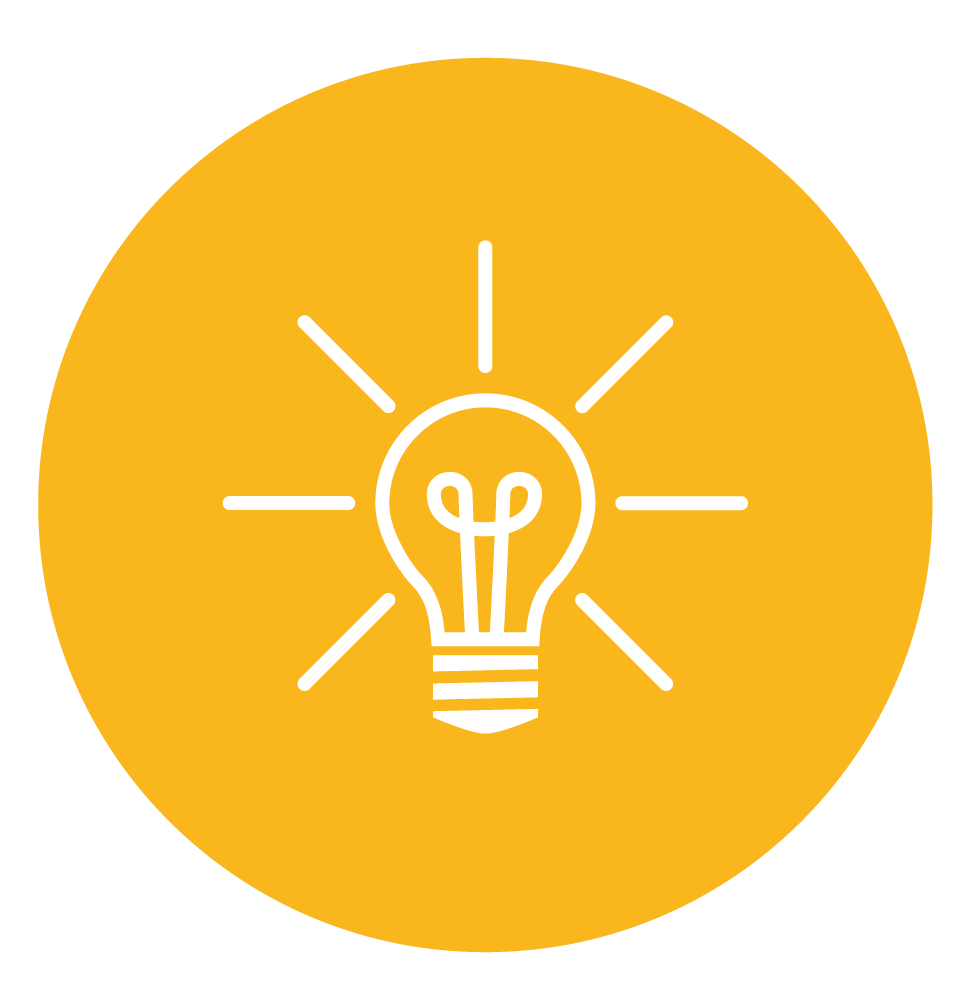
3. high demand for new learning approaches
The first challenge is the complexity of the content to be learned. A large amount of in-depth knowledge needs to be conveyed and there are many connections between numerous, highly specialized facts. And the content needs to be updated continuously. Above all, medical affairs do not only need to know the facts—they also have to interpret them.
The second challenge is the strongly regulated environment. Every statement in the learning material for medical affairs needs to be clearly referenced. And the material has to pass through extensive medical, legal, and regulatory reviews. These approval processes take time and several reviewers are involved. Developing learning tools requires a systematic and structured process that mirrors the review process.
The third challenge is to overcome traditional learning approaches. Knowledge gaps can impair the credibility of medical affairs. That is why medical affairs staff are highly motivated to learn everything they need for their work. But they are often disappointed by traditional learning methods that don’t satisfy their desire to master the complex knowledge in their specific therapeutic area. So there is the urgent need for active and innovative learning tools that challenge and engage learners.
Question 2:
You mentioned that the complexity of the content in medical affairs L&D is one of the main challenges. What in your opinion is the optimal approach to transform this content into an effective learning tool for medical affairs?
According to my experience, a paradigm shift is needed. A shift away from a content-driven approach towards a learner-centric approach. A lot of learnings suffer from the urge to include every single piece of information that the developers can get their hands on.
The reason: the scientific world is driven by facts and data. Content is regarded as the one and only starting point for the development of L&D programs for medical affairs. But I think, that this approach is not very effective.
a paradigm shift is needed
in L&D of medical affairs
In my opinion, an effective learning program needs to be both learner-centric and problem-based. You need to focus on the specific needs of the group of learners. To do so, you should:
- make the learning tailored to the real demands of the learners’ job
- present the content in a way that it can be easily grasped by the learner so that it sticks
Our philosophy at CAST is to create learnings that meet these two criteria. We follow a strict backward design to curate the content in a way which is tailored to the learner’s job role.
And we do a lot to transform dry scientific data and facts into problem-based activities, memorable images, and animations that are easy to understand.
That doesn’t mean that we oversimplify things. It means we try to clarify things at a high intellectual level.
Question 3:
If a top-20, global pharmaceutical company contacts you today to develop a medical affairs L&D program, what would the curriculum look like?
I think you cannot reduce L&D in medical affairs to a single event—you have to see this as a continuous process. In general, I would divide a L&D program into three phases:
ONBOARDING
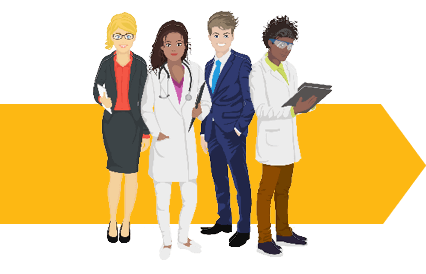
SELF-DIRECTED LEARNING
(ONLINE & OFFLINE)
ADVANCED TRAINING
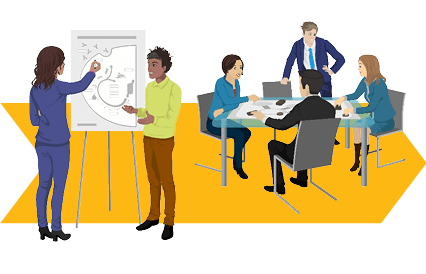
IN-PERSON CLASSROOM TRAINING
(ON-SITE & TRAINING LOCATION)
ONGOING TRAINING

ONLINE & OFFLINE
TRAINING TOOLS
1. Onboarding
The onboarding phase is needed to get all new employees to the same level of knowledge. This is very important because some hired employees might be very experienced in the therapy area, while others are new to the field. In my opinion, this fundamental phase can be effectively supported by self-directed learning.
2. Advanced training
The aim of advanced training is to apply and deepen the knowledge gained during the onboarding phase. This is passive knowledge that comes from one-way instruction. Advanced training involves activating passive knowledge, thereby making it ready-to-use and easily accessible for the day-to-day professional life of medical affairs. The advanced phase is also necessary to eliminate preconceptions and misconceptions of the learners, which are an inevitable part of the learning process. In my experience, the best learning success can be achieved by bringing the learners together in a room and letting them interact with challenging tasks while discussing the material with one another and with a content expert.
3. Ongoing training
An ongoing training supports medical affairs in keeping up-to-date. After the learner has completed the onboarding and advanced training phases, new data and novel insights will come up over time. In my opinion, appropriate learning tools are essential to keep the learner up-to-date on the job. Some examples are interactive webinars with experts or video lectures.
L&D in medical affairs is not a single event – you have to see this as a continuous process
